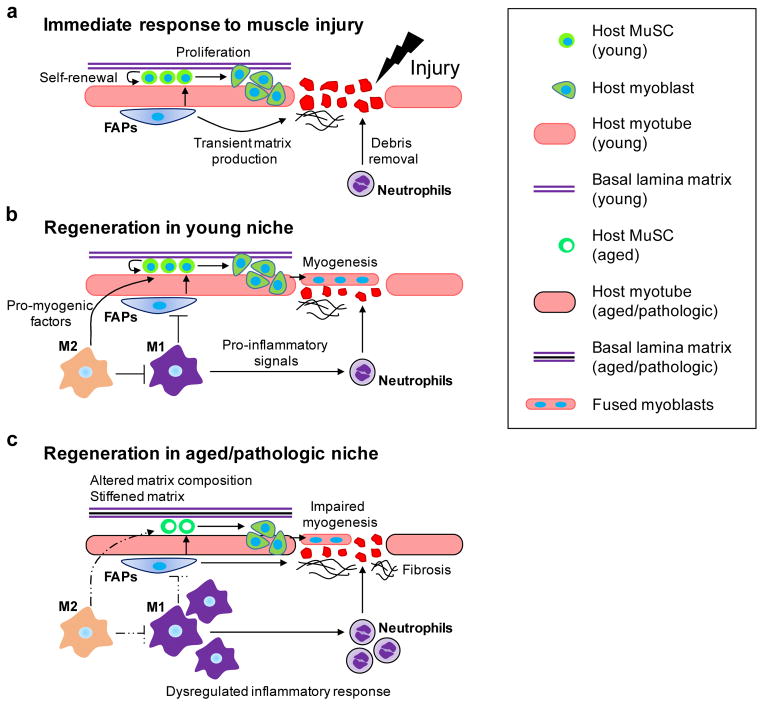Figure 1.
(a) Immediate response to muscle injury. Upon injury, quiescent muscle satellite cells (MuSCs) activate, self-renew, proliferate, and differentiate into myoblasts. Fibroadipogenic progenitors (FAPs) also activate, differentiate, and subsequently secrete transient extracellular matrix. Neutrophils infiltrate the site of injury and remove debris. (b) Regeneration in young niche. Pro-inflammatory M1 macrophages induce FAP apoptosis and recruit neutrophils. Anti-inflammatory M2 macrophages secrete anti-inflammatory, myogenic, and angiogenic factors. Myoblasts differentiate and fuse to form new muscle fibers. (c) Regeneration in aged/pathologic niche. MuSC niche composition is altered and results in stiffening. Normal inflammatory response is dysregulated, where inflammation persists over a longer period of time. FAPs over-secrete extracellular matrix, leading to progressive fibrosis. Myogenesis is impaired.

